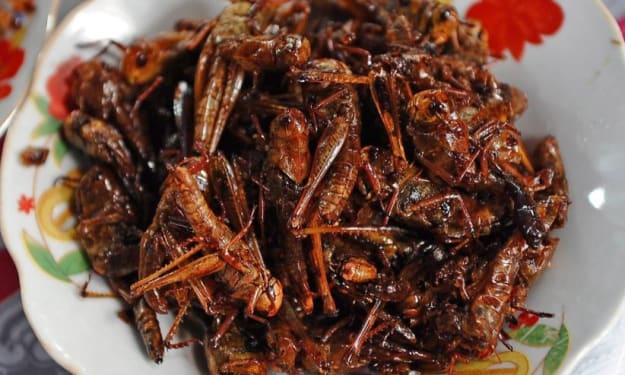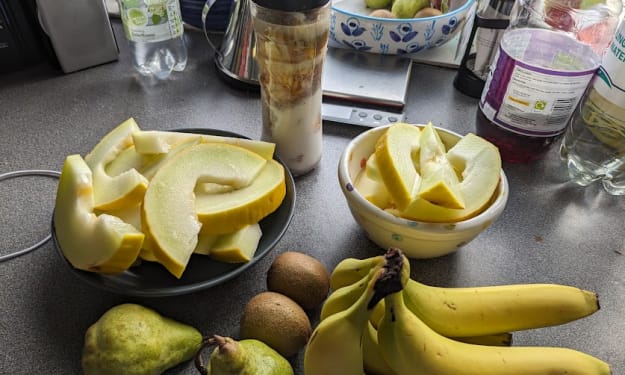Ice Floes and Tomatoes
From a lakeside kitchen

Seasons are visibly changing here at our small North Iowa lake.
We can see two miles directly opposite to downtown on the northern shore and east to the large state park. The shore between those two points is lined with homes and summer cottages. Now the docks and boat lifts have all been pulled out. Winter is reclaiming the water.
The first ice bits showed up the week before Thanksgiving. That Thursday we could see just a few thin icy blobs floating around at the shore while the rest of the lake was open water. On Friday we started to see more ice in the center of the lake. Saturday morning we woke up to a lake that was pretty much iced over except by our shore. As though Mother Nature was making a snow cone, the strong northwest wind kept sweeping up the newly forming ice from the surface and piling it up where it was colder. The wind stopped overnight and the temperature dropped to 7 degrees. Presto – iced over. The city declares official “ice in” when there isn’t any open water along the shore of the lake. We were official the Monday before Thanksgiving.
We’ve had some light snow as well. It has drifted along the flash-frozen, smooth-as-glass lake. Our neighbor is itching to put on his ice skates. But the ice is only about 3 inches thick. Warmer weather has prevented the ice from deepening into the lake waters. Although the bait shop has reported anxious, and daring, fishermen venturing to auger holes to drop a line for the illusive walleye or even a mythic muskie. It will be some time and a period of continuous frigid weather until ice is strong enough to support a sled, ATV, car, or pick-up truck. At winter’s end ice thicknesses of 14- to 20-inches are common. For that we need below-zero nights and days.
We also need heavy coats, scarves, gloves, and hats. Many of our less well winter-equipped summer neighbors have closed up their cottages and returned to warmer winter homes and work or fled to sunny climates south and west.
Now that there are fewer of us year-rounders about the summer-shy critters emerge, boldly leaving footprints in the snow. Sharp-clawed tracks of mice and voles lead to their burrows under the drifts. Prints from scampering squirrels demonstrate their leaping ability feet away from tree trunks. Rabbits. Oh my, rabbits practically, and perhaps hopefully, pave the area around the gate of now empty vegetable garden. They congregate overnight around the protective vegetable garden fence, perhaps planning how to get in next summer.
Predators are bolder, too. A red fox has been roaming across the frozen lake about 200 feet from shore. A bald eagle has spent time high in the oak tree next to our deck. I’ve seen him swoop down along the high bank. A feral cat skulks out from under a summer-cottage porch. More prosaically, the crows noisily peck at the neighbor’s garbage bags on Monday mornings.
As the hope-filled rabbits discover from behind the protective fence at the end of November, seasons changed much sooner in our vegetable patch. We’re down to the last five of our homegrown tomatoes. I picked them in October. The mid-month killing frost would have finished them off. So I did what I’ve done every year. I harvested them in various stages of ripening and put them in a dark cool place to ripen. There were 62 and we’ve been savoring them. Some were nearly ripe We've been stretching them out to keep summer with us all through the leaf raking.
These last five were green when I picked them. Now fully ripened, they aren't picture perfect but they still taste more like summer than anything from the grocery store.. For the real taste of summer I dive into the freezer and open up a bag of simply chopped garden freshness. The smell is enough to take me back to late September. I do "put tomatoes up" by old fashioned canning. I think that canning them takes the edge off their garden-fresh taste. So I make an Old Fashioned Chili Sauce.
I found the recipe for this remarkable Chili Sauce in an 1870s issue of Prairie Farmer magazine years ago. It has been my go-to recipe ever since. The name is misleading. For while it adds the zing of a modern chili sauce, the recipe uses a completely different palate of seasonings. No garlic or cumin, instead ingredients include the warm spices we associate with baking—cinnamon, ginger, allspice. The sharp tang of vinegar is mellowed by some sugar. Simmered for 15 to 20 minutes, the finished sauce keeps in the refrigerator for a couple of weeks and in the freezer for much longer. Of course you can put it up in canning jars with a boiling water bath following USDA guidelines.
This sample recipe uses commercially canned diced tomatoes and makes two pints – enough to put on burgers, mix into ground beef for meat loaf, spoon onto baking chicken, layered with zucchini and microwaved, and many other practically limitless uses.
Sample Size Recipe for 1870s Chili Sauce
2 cans (14-16-ounces) UNSEASONED Petite diced tomatoes or 3 cups diced fresh tomatoes
1/4 cup minced onion
1/4 cup minced green peppers
1/4 cup sugar
3/4 cup vinegar
1/4 teaspoon each of ground allspice, cloves, cinnamon, ginger, mace, and nutmeg
Pulse the vegetables in a food processor, blender, or use an immersion blender to make pieces that are about 1/16-inch. Then combine all ingredients in a 4- or 5-quart saucepan. Bring to a boil and then reduce heat. Simmer, stirring frequently, until onion and pepper look transparent and the mixture has thickened. Takes about 15 to 25 minutes depending on how juicy the tomatoes are. Watch it carefully as it begins to thicken so that it doesn’t scorch. Pour into sterilized quart or 2 pint jars. May be stored in the refrigerator for two weeks, or frozen for later enjoyment.
About the Creator
Rae K Eighmey
For 30 years of recipe time-travel magic I’ve been in the kitchens of Lincoln, Franklin, and more.
Here I weave tasty recipes into thoughts of gardens, nature, and climate. Enjoy!
You can find more at Raes Kitchen https://bit.ly/3OVFgrj





Comments (1)
Living in a city I can only imagine having my own garden ripe for the picking, thanks for sharing the recipe and the story behind it!